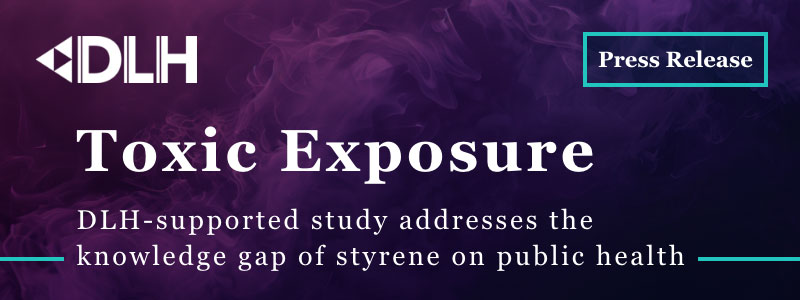How a Common Industrial Chemical May Be Quietly Impacting Brain Health—DLH-Supported Research Explores

DLH researcher Braxton Jackson co-authored a recently published study that uncovered key insights into a public health challenge. The paper, “Concentrations of blood styrene and neurobehavioral function among Gulf state residents in the U.S.,” investigates the neurobehavior of those exposed to styrene, a neurotoxicant that depresses the central nervous system.
Why you should learn more: Styrene is produced at a high volume in the U.S. and is widely used to make plastics, resins, and rubber. Individuals can be exposed to styrene through tobacco smoke, automobile exhaust, industrial emissions, and food contamination from packaging. However, the highest levels of exposure are most often found in occupational settings, such as among workers at facilities manufacturing reinforced plastic, polystyrene, and boats.
When exposed to high levels of styrene, the central nervous system can become depressed. Color vision, hearing, and balance problems are the most sensitive neurologic impacts, with exposed individuals reporting both acute and chronic effects.
Why this research is critical: There has been limited research into styrene neurotoxicity in non-occupational settings. Knowledge gaps also exist due to inconsistencies in observed neurobehavioral effects such as impaired attention, memory, and reaction time.
Evaluating styrene toxicity at low levels is of public health importance because styrene is detected in more than 40% of the U.S. general population, but levels in the general population can be 25 times lower than those among typically exposed workers. Non-smokers also have average blood concentrations about one-third that of smokers.
The DLH impact: To address this knowledge gap, the study investigated relationships between blood styrene at levels relevant to the general population and neurobehavioral test performance. Throughout the study, styrene was detected in 77% of the 328 participants.
The researchers observed limited evidence of adverse associations between low-level blood styrene concentrations and neurobehavioral test performance, although some associations were stronger among smokers.
Interested in learning more about DLH-supported research? Check out how DLH innovation is driving public health progress in our latest Research Update.




Leave a Reply
Want to join the discussion?Feel free to contribute!